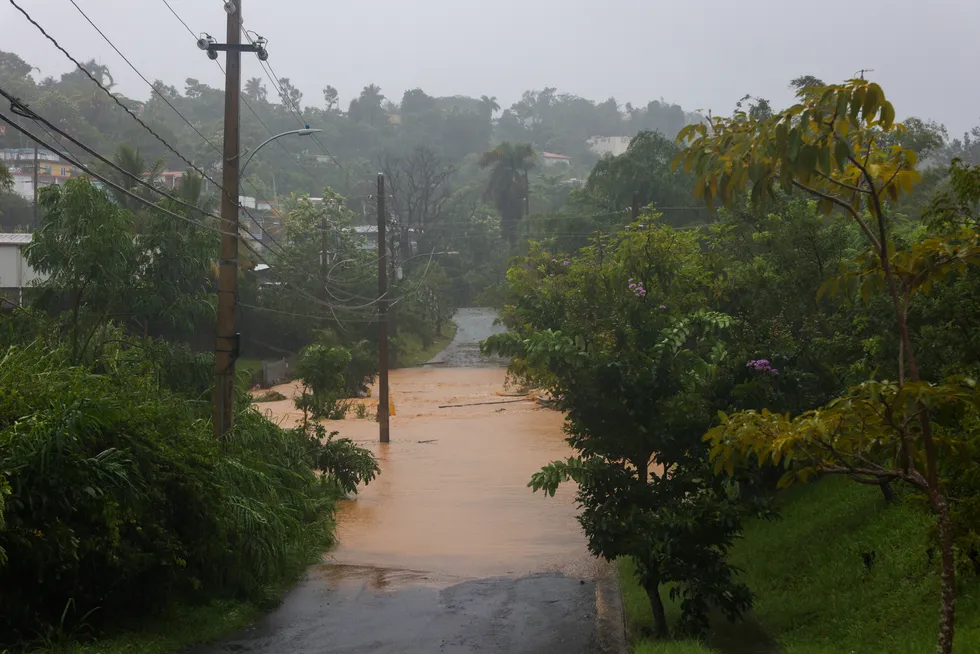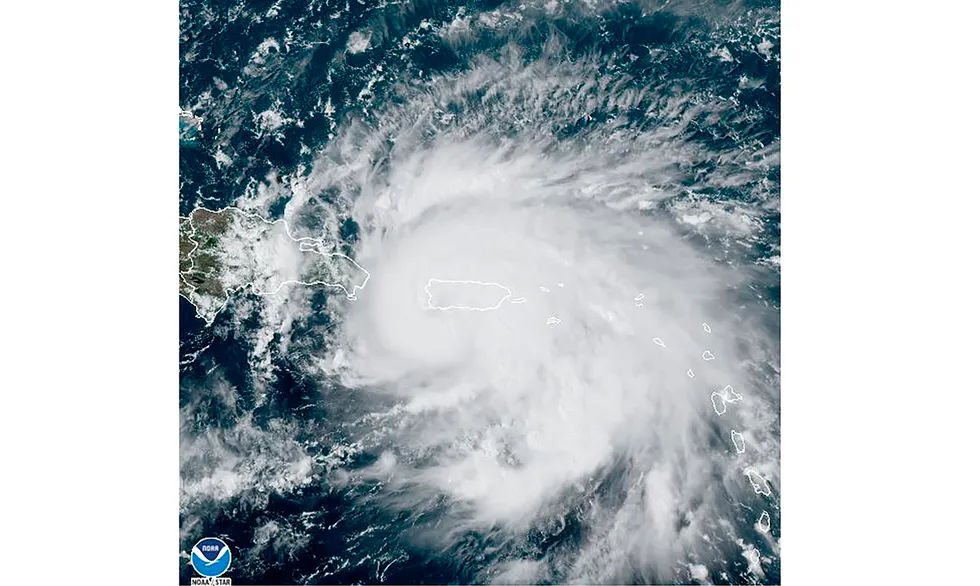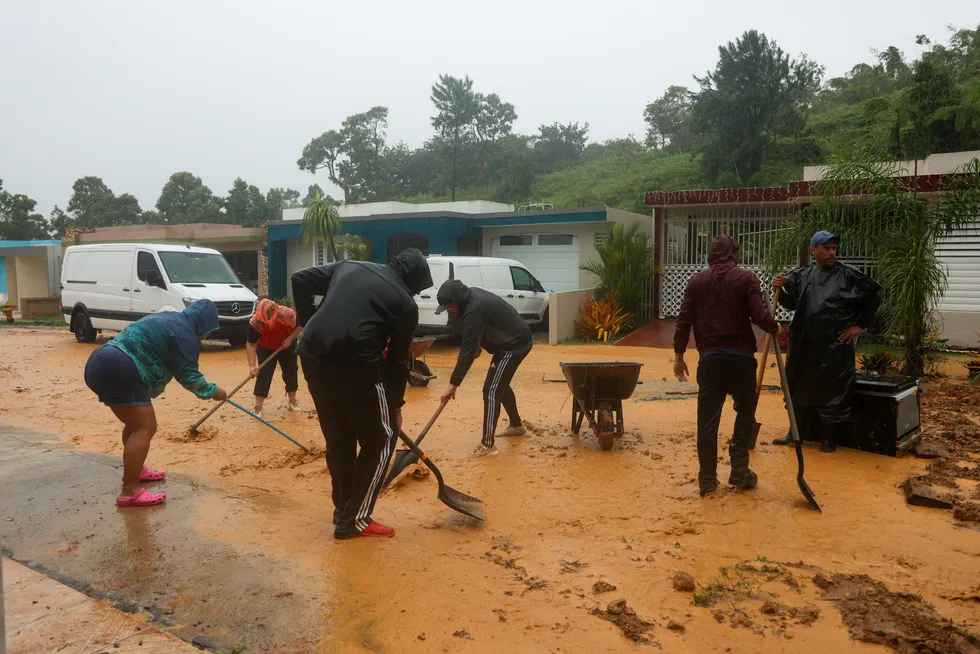Hurricane Fiona’s destruction may not be as devastating as Hurricane Maria’s in 2017, but the calamitous wake it left—and continues to leave—behind in Puerto Rico and neighbouring areas shouldn’t be underestimated. We take a look at what’s happening in the area and the nexus between frequently stronger hurricanes and typhoons andclimate change
In the days leading up to the fifth anniversary of Hurricane Maria, which killed thousands in Puerto Rico, another hurricane pummeled the island archipelago, reversing the country’s slow progress toward improving its fragile infrastructure. Safe to say, it’s a precarious position for the island.
The wreckage Fiona continues to leave has left Puerto Rico in shambles. As the storm made landfall on the island’s southwest coast on the afternoon of September 18, it caused widespread power outages, catastrophic floods, and dangerous mudslides across the territory.
So it’s no surprise when the devastation caused by Hurricane Maria, which hit Puerto Rico as a Category 4 hurricane on September 20, 2017, was immediately brought to mind when Hurricane Fiona made landfall on the island. As of Tuesday, much of the island was still inaccessible, making it impossible to get a complete picture of the destruction.
Puerto Rico’s governor, Pedro Pierluisi, said the hurricane was “catastrophic,” with the deaths of at least four individuals. President Biden also announced a state of emergency in Puerto Rico, giving the Department of Homeland Security (DHS) and the Federal Emergency Management Agency (FEMA) the green light to coordinate disaster relief operations in the wake of Hurricane Fiona.

No electricity
On Sunday, the territory was still in the dark after being hit by hurricane-force winds, catastrophic floods, and the collapse of at least one bridge. On top of that, the storm, which is currently moving north of the Dominican Republic, has poured over two feet of rain in some areas, causing rivers to rise and wash away roads and bridges.
It is believed that 85 mph gusts of wind, much beyond minimal hurricane force, knocked off electricity to about 1.5 million utility consumers. The National Hurricane Center predicted 12–18 inches of rain for Puerto Rico, with localised totals of up to 30 inches.

Despite Pierluisi’s claims this week that many initiatives were in the works, the system has not undergone significant modernisation since Hurricane Maria in 2017.
Marla Pérez-Lugo, a professor of sociology and disaster studies at the University of Texas Rio Grande Valley, told Vox that, “The magnitude of the disaster is not a function of the magnitude of the event but of the vulnerability of the community.” She adds that “In Puerto Rico, everything was on its knees.”
Island utility LUMA Energy Public Safety Manager Abner Gómez said in a statement that they are “deeply aware of the painful memories from Hurricane Maria and the lasting effect it has had on the electric grid.” On the other hand, they also mentioned that the vast breadth of the outage and the hazardous weather on the island on Sunday night mean that power restoration might take several days.
The grapple for electricity brought up painful memories of Hurricane Maria again, the deadliest natural catastrophe to strike a U.S. territory in a century.
There were also problems that led to power outages, such as seaweed clogging the water filters used by condensers.
Roads impassable and bridge brought down
The flooded areas were silent since few vehicles could get through as muddy water inundated streets and crawled up the sides of homes in the worst-affected neighbourhoods.
Surpassing the previous record of roughly 28 and a half feet established after Hurricane Maria, the Guanajibo River in southwest Puerto Rico, near Hormigueros, peaked at over 29 feet.
According to videos by NBC news, on Sunday, flooding swept away a makeshift bridge across the Guaonica River in the central highland village of Utuado. The muddy water overwhelmed and quite literally overpowered the bridge as the metal buckled and eventually collapsed.
After Hurricane Maria, the Utuado bridge was put in place to provide a temporary link between various areas until a new, more permanent bridge could be constructed. Five years later, officials have claimed that the installation of the new structure, which is currently in the planning stages, is set for the year 2024.
Dangerous landslides
Puerto Rico is a noted hotspot for landslides due to its steep topography, frequent earthquakes, and tropical environment prone to harsh weather and it’s common knowledge that heavy downpours increase the likelihood of landslides. It’s no different this time round in Puerto Rico with Hurricane Maria. In mountainous areas, landslides occurred as bodies of water overflowed their banks, posing a danger to a large number of people’s homes.
In a video by The Washington Post, rescue worker Eric R. Garcia Flores said, “What Hurricane Maria brought was wind, lots of wind. Unlike this one, which brought too much water. We are all in the streets checking on landslides.”
According to the United States Geological Survey (USGS), even though most landslides were very minor, some were more drastic. Long runout debris flows developed from several of them that started before, during, and after floods. Furthermore, most landslides occurred on existing steep slopes in hilly and mountainous areas.
What we’ve learnt so far
Since Hurricane Maria, it just takes moderate weather to cause widespread power outages in Puerto Rico. The grid was completely destroyed in the 2017 hurricane, resulting in the world’s second-longest outage that lasted for months. Small storms can knock out power for a couple hundred thousand people in Puerto Rico. And it seems like the same obstacles that left the grid in a fragile state persist despite the billions of dollars allocated to strengthen it after Maria and the ambitions to rebuild and rethink its energy system.
If we were to find something to point fingers at for the territory’s failing grid, it doesn’t take much to assume that the blame falls on a private Canadian-American company called LUMA Energy. While the power facilities in Puerto Rico are still controlled by the government, the energy company secured a 15-year contract to run the island’s transmission and distribution system in 2020.

In light of this, we must ask how privatisation brings concerns about transparency and responsibility. Furthermore, we must remember that power outages are not just simply inconveniences but incredibly dangerous. During severe weather, power outages are a leading cause of mortality. For instance, power outages have been blamed for a significant number of the 3,000 or so deaths that occurred during Hurricane Maria.
Any suggestions?
The island’s location is the first stumbling block in overcoming Puerto Rico’s electricity problems. Since it has so few natural resources, the region must import all of the fuel used by its primary power plants. Furthermore, Puerto Rico is not only prone to storms, but other natural disasters such as earthquakes. To say that solving its power-grid issue is tricky is an understatement.
However, it’s not impossible. Investments in renewable energy such as solar panels could alleviate issues regarding power outages. Fortunately, ideas like this are not new. Organisations like Queremos Sol (We Want the Sun) have been working to promote this change on the island.
Solar energy is becoming more popular in Puerto Rico, and those who can afford it have begun to switch to it. However, with fewer customers, Puerto Rico’s electricity companies will have to raise rates for many of the island’s most vulnerable residents.
Stronger hurricanes and climate change
Kevin Reed, an associate professor of atmospheric science at Stony Brook University in New York told NBC news that increases in precipitation have been one of the most visible signs of climate change’s impact on storms in recent years. Hotter waters provide more energy for developing storms, causing them to become more severe. Reed argued that a warmer atmosphere had the potential to store more moisture.

Researchers have found that although rising temperatures are not likely to increase the frequency of storms, they are increasing the intensity of storms when they do occur, which may frequently lead to intense flooding. They are also being pushed to find ways to better explain the hazards due to the increasing frequency of intense storms, which many weather and climate experts believe will endure.
In the wake of Hurricane Fiona, it serves as a sobering reminder that we need to pay even closer attention to natural events, no matter how common they might be—especially to countries and territories that experience multiple events a year. In terms of Puerto Rico specifically, it’s a disservice that despite knowing exactly what to do to fix its infrastructure to alleviate and prevent the worst case scenarios of natural disasters, the ones running the show would rather rely on the resilience of its people.
FEATURED IMAGE: via CIRA/RAMMB | IMAGE DESCRIPTION: Hurricane Fiona is captured by satellite as the eye of the Category 1 storm approaches Puerto Rico on Sept. 18

